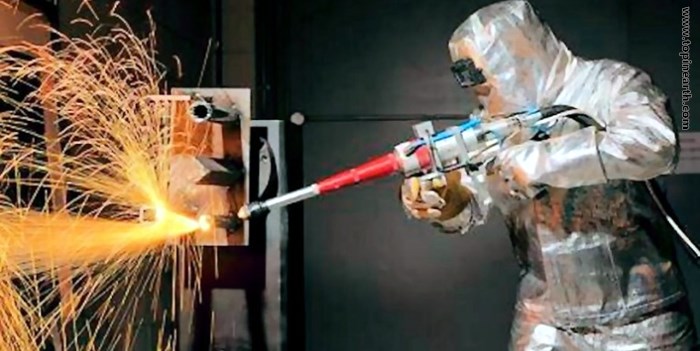As the Pandemic thins their workforce, older atomic operators are being called out of retirement. And that is concerning.
The COVID Pandemic has made a nuke reactor disaster even more likely. Reports from “terrified” workers at a Pennsylvania reactor indicate vital precautions may not even be possible.
Nationwide, with falling demand and soaring prices for nuke-generated electricity, the Pandemic casts a dark shadow over whether technicians should be going to work at the reactors at all, and whether neighboring residents will allow them to be refueled and repaired.
America’s 96 remaining atomic reactors are run by a coveted pool of skilled technicians who manage the control rooms, conduct repairs, load/unload nuclear fuel.
Because few young students have been entering the field, the pool of about 100,000 licensed technicians has been—-like the reactors themselves—-rapidly aging while declining in numbers.
Every reactor control room requires five operators at all times. But the physical space is limited there and in plant hot spots that need frequent, often demanding repairs. Social distancing is virtually impossible. Long shifts in a confined space undermine operator safety and performance.
Furthermore, every 18-24 months each reactor must shut for refueling and repairs. Itinerant crews of 1000 to 1500 technicians travel to 58 sites in 29 states, usually staying 30-60 days. They often board with local families, or in RVs, hotels, or Air B&Bs. Some 56 reactors have been scheduled for refuel/repairs in 2020, but there is no official, organized program to test the workers for the Coronavirus as they move around the country.
As the Pandemic thins their workforce, older operators are being called out of retirement. The Trump-run Nuclear Regulatory Commission has now certified 16-hour work days, 86-hour work weeks and up to 14 consecutive days with 12-hour shifts.
Long-time nuclear engineer Arnie Gundersen warns of fatigued operators falling asleep on the job. He recalls at least one exhausted worker falling into the highly radioactive pool surrounding the high-level fuel rods. Operator fatigue was also a factor in the 1979 melt-down that destroyed Pennsylvania’s Three Mile Island Unit Two.
The industry is now using the Coronavirus Pandemic as cover to push through a wide range of deregulation requests. Among them is a move to allow radioactive waste to be dumped into municipal landfills.
Reactor owners also want the NRC to let them skip even critical repairs, escalating the likelihood of major breakdowns and melt-downs. Nearly all US reactors were designed and built in the pre-digital age, more than 30 years ago. Many are in advanced stages of decay. But Pandemic-stricken US hospitals now have zero spare capacity, negating the industry’s ability to meet its responsibilities to cope with the human fallout from increasingly likely disasters.
Industry-wide the Pandemic has brought working conditions to the brink of collapse. At Pennsylvania’s Limerick Generating Station, workers say they are “terrified” that the plant has become a “breeding ground…a complete cesspool” for the Coronavirus. “I’m in a constant state of paranoia,” one technician told Carl Hessler, Jr., of MontcoCourtNews.
Others told Hessler that social distancing is non-existent, with “no less than 100 people in the training room” and “people literally sitting on top of each other…sitting at every computer elbow to elbow.” Shift change rooms, Hessler was told, were “standing room only.” At least two Limerick workers are confirmed to have carried the virus. COVID rates in the county are soaring.
Nuclear engineer Gundersen emphasizes that with limited control room floorspace and cramped conditions for making repairs can make social distancing impossible. “Some component repairs can involve five workers working right next to each other,” he says.
Because reactor-driven electricity is not vital amidst this pandemic downturn, the demand for atomic workers to “stay home” is certain to escalate. “I am concerned with Exelon & Limerick Nuclear Generating Station’s handling of the scheduled refueling—which has required bringing in workers from across the country during this pandemic,” says US Rep. Madeleine Dean in a statement likely to be repeated at reactor sites around the US.
“The potential increase of COVID-19 cases from 1,400 new workers not observing social distancing is staggering,” says epidemiologist Joseph Mangano of the Radiation and Health Project. “The Limerick plant should be shut until the COVID-19 pandemic is over.”
Ground Zero nationwide may be Pacific Gas & Electric’s two 36-year-old reactors at Diablo Canyon. PG&E is bankrupt for the second time in two decades, and recently pleaded guilty to 85 felonies from the fires its faulty wires sent raging through northern California, killing 84 people. In 2010 a faulty PG&E gas line exploded in San Bruno, killing eight people.
Surrounded by earthquake faults, Diablo’s construction prompted more than 10,000 civil disobedience arrests, the most at any US reactor. PG&E now admits its two Diablo nukes will lose more than $1.2 billion this year, more than $3.44 million/day.
Amidst its bitterly contested bankruptcy, PG&E may be taken over by the state. But more than a thousand workers are slated in early October to refuel and repair Unit One, which the NRC has admitted is dangerously embrittled.
Whether local residents concerned about both a nuclear accident and the spread of the Coronavirus will let them into the county remains to be seen. So is whether they’ll be still operating by then.
With the future of the nuclear industry at stake, the whole world will be watching.
Harvey Wasserman’s Solartopia! Our Green-Powered Earth is at www.solartopia.org, along with The People’s Spiral of US History. His California Solartopia Show is broadcast at KPFK/Pacifica 90.7fm Los Angeles; his Green Power & Wellness Show is podcast at prn.fm.

